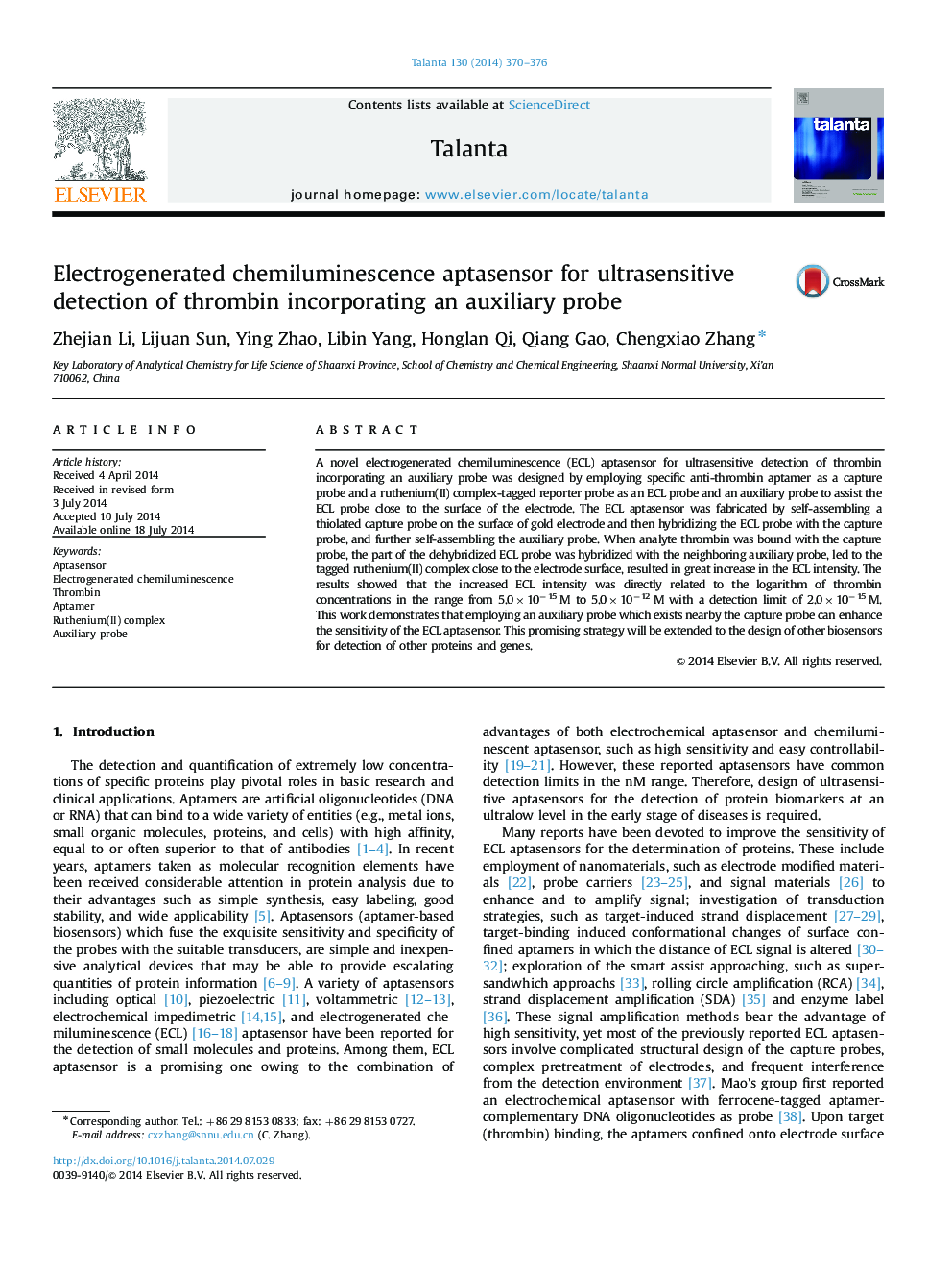| Article ID | Journal | Published Year | Pages | File Type |
|---|---|---|---|---|
| 1243604 | Talanta | 2014 | 7 Pages |
•A highly sensitive ECL aptasensor for thrombin was designed.•The auxiliary probe can enhance the sensitivity of the ECL aptasensor.•The recognition activities of the aptamer are not altered since it is not labeled.
A novel electrogenerated chemiluminescence (ECL) aptasensor for ultrasensitive detection of thrombin incorporating an auxiliary probe was designed by employing specific anti-thrombin aptamer as a capture probe and a ruthenium(II) complex-tagged reporter probe as an ECL probe and an auxiliary probe to assist the ECL probe close to the surface of the electrode. The ECL aptasensor was fabricated by self-assembling a thiolated capture probe on the surface of gold electrode and then hybridizing the ECL probe with the capture probe, and further self-assembling the auxiliary probe. When analyte thrombin was bound with the capture probe, the part of the dehybridized ECL probe was hybridized with the neighboring auxiliary probe, led to the tagged ruthenium(II) complex close to the electrode surface, resulted in great increase in the ECL intensity. The results showed that the increased ECL intensity was directly related to the logarithm of thrombin concentrations in the range from 5.0×10−15 M to 5.0×10−12 M with a detection limit of 2.0×10−15 M. This work demonstrates that employing an auxiliary probe which exists nearby the capture probe can enhance the sensitivity of the ECL aptasensor. This promising strategy will be extended to the design of other biosensors for detection of other proteins and genes.
Graphical abstractFigure optionsDownload full-size imageDownload as PowerPoint slide
